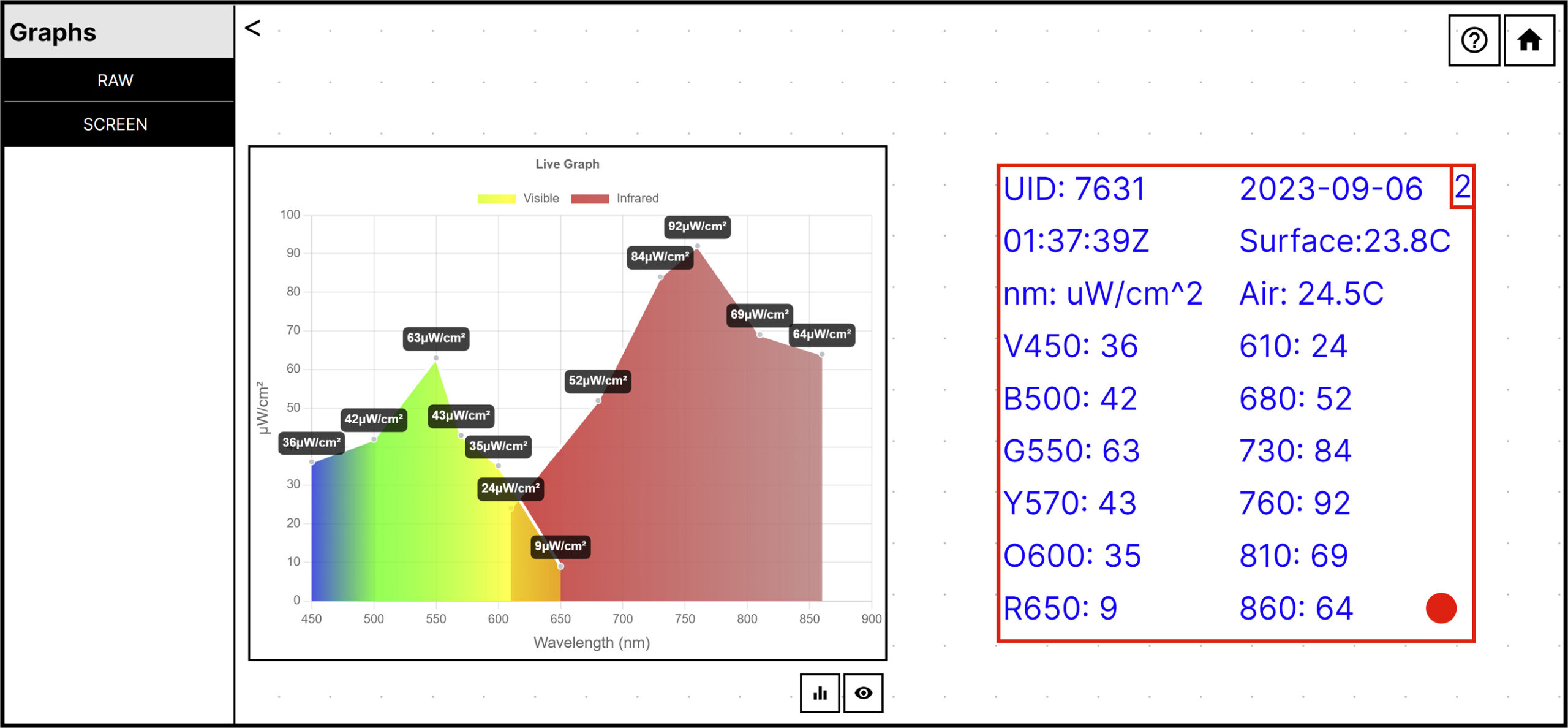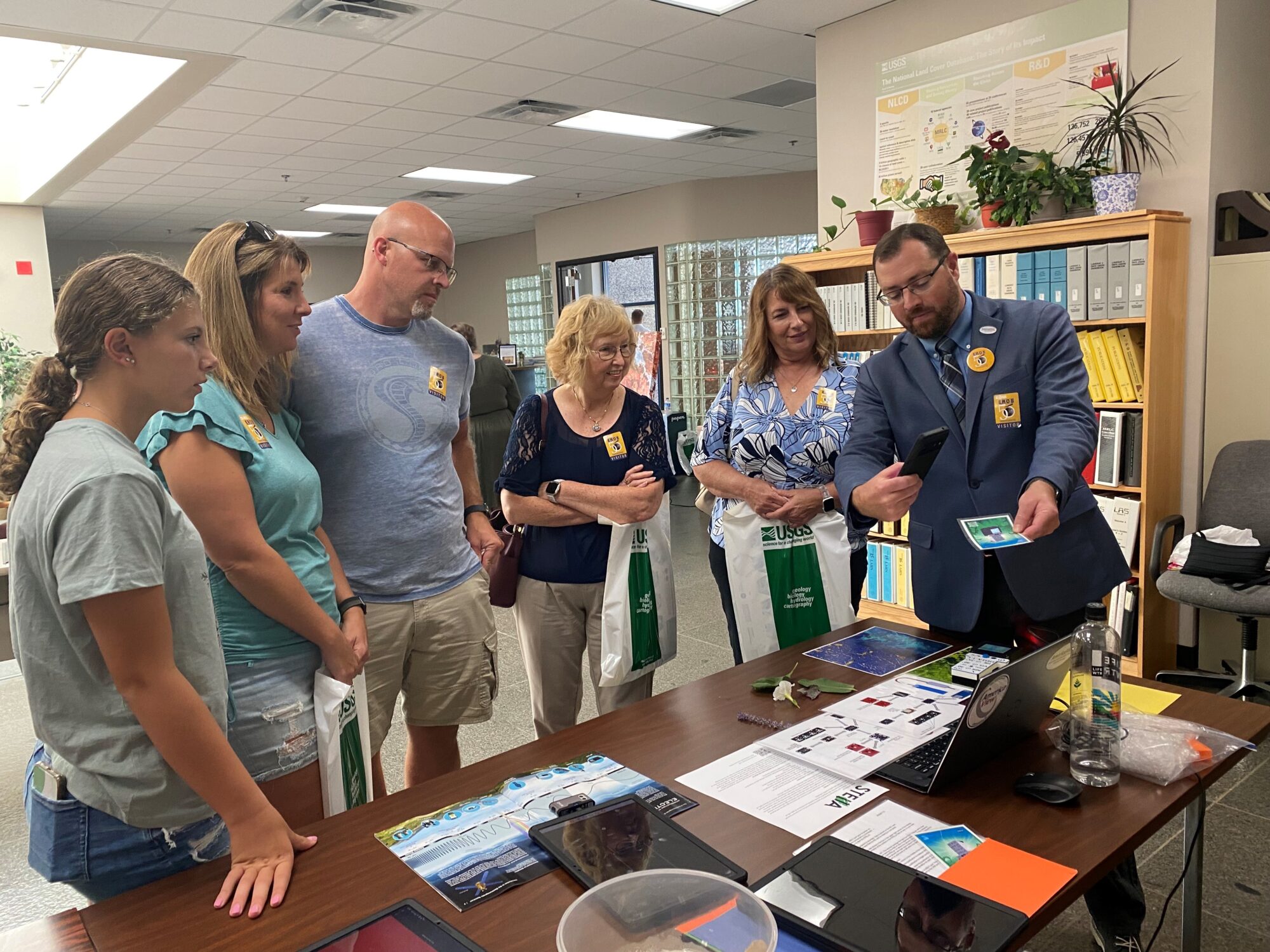By Ellie Leydsman McGinty
A Prominent Center for Earth Observation
The Earth Resources Observation and Science (EROS) Center recently celebrated its 50th anniversary from August 17-19, 2023. The EROS Center, located northeast of Sioux Falls, South Dakota, is a federal science center operated by the U.S. Geological Survey (USGS) that was established as a central repository for Landsat (formerly Earth Resources Technology Satellite) imagery, NASA aircraft and spacecraft data, and USGS aerial photography. Throughout its five decades of service, the EROS Center has become the primary steward of remotely sensed land images of the Earth, a pivotal leader in studying the Earth’s land areas and natural resources, and an authoritative provider of land change science data and information.
The inception of the EROS Center can be traced back to September 21, 1966, when Stewart Udall, then-Secretary of the Interior, issued a press release announcing Project EROS: An Earth Resources Observation Satellite Program. Project EROS was visualized as a collaborative USGS-NASA interagency Earth-observing satellite program that would acquire space-based data for natural and human resource management. After NASA signed the project approval document for the first Earth Resources Technology Satellite (ERTS-1) in January 1969, the USGS recognized the need for a facility that would process, distribute, and archive the data from the mission. Funds were accordingly appropriated in 1970 to build a data center. On March 31, 1970, a site near Sioux Falls, South Dakota, was strategically chosen based on data transmission investigations, socioeconomic needs, and political support. South Dakota Senator Karl E. Mundt was a key factor in generating the financial resources to make the data center possible.
On August 7, 1973, the Karl E. Mundt Federal Building at the EROS Center was dedicated, and on January 1, 1974, the facility became fully operational. By the time the building was dedicated, ERTS-1 (later renamed Landsat 1) had been generating images for over one year. Employees of the EROS Center, who had been working in interim facilities in Sioux Falls, had already processed and produced an average of 25,000 images and photographs per month in response to requests from users all over the world. Within a year of the EROS Center becoming fully operational, imagery, photography, and electronic data from 16 different organizations were being distributed and archived.
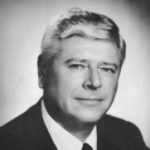
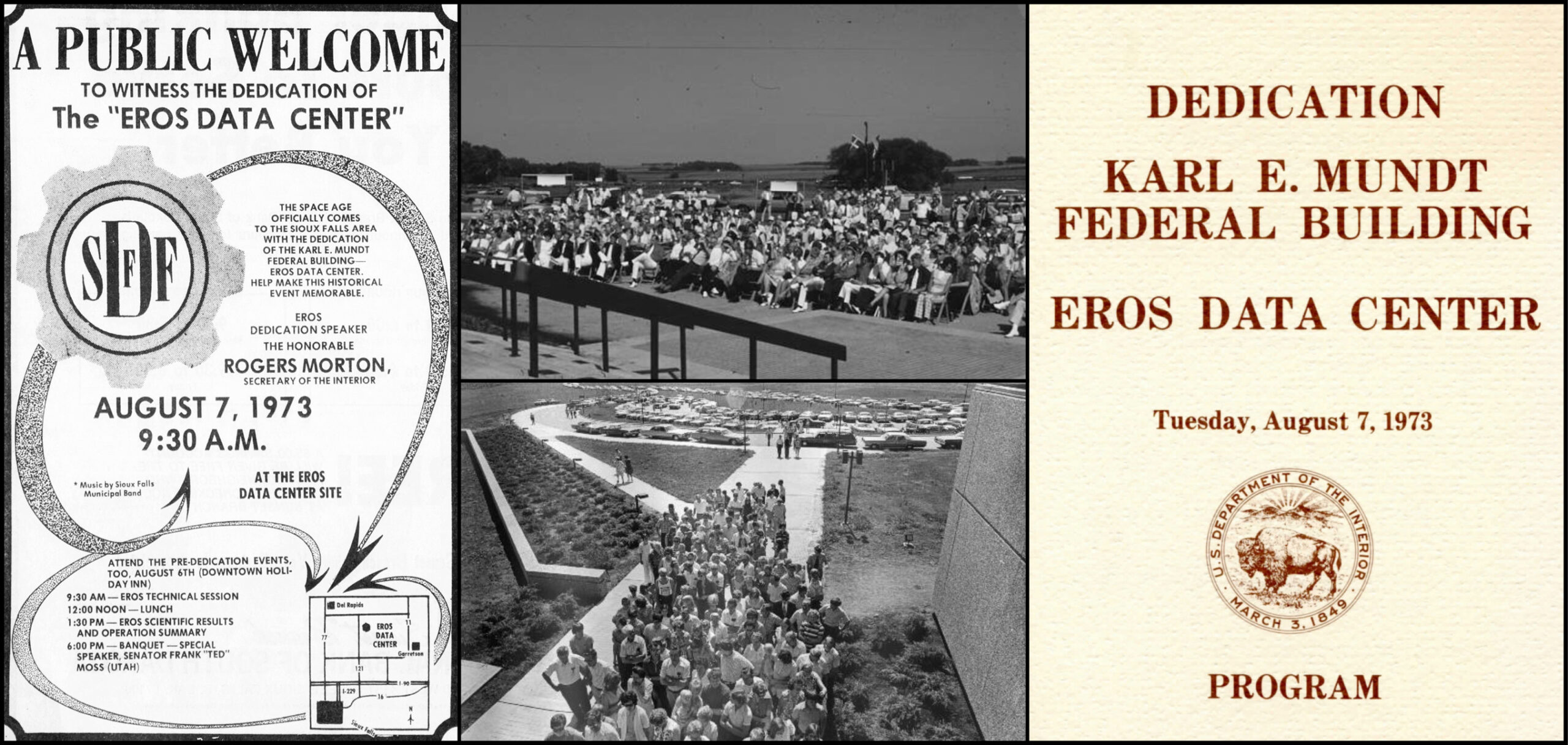
A Landmark Celebration
To commemorate the milestone anniversary of the EROS Center, a three-day celebration was held to honor 50 years of excellence and service to the local community, the nation, and the world. The celebration featured an evening community reception, a ribbon-cutting ceremony, a rededication event, and a “Friends and Family” open house. The open house consisted of special tours, science talks, alumni presentations, and STEM activities. AmericaView, a nationwide network of educators, took the lead in organizing and hosting a STEM event designed to engage learners across all age groups.
In collaboration with key partners, such as the NASA Landsat Communications and Public Engagement (CPE) Team, the NASA AREN AEROKATS Team, South Dakota State University, and South DakotaView, AmericaView curated several interactive stations for attendees in the USGS EROS Library that provided an overview of remote sensing and underscored the significance of Earth observation. The stations included the following offerings: a table with Landsat outreach materials; a Landsat collage activity; a Frustrationless Flyer kite-building and coloring activity; thermal (FLIR) camera and drone displays; and a demonstration of the STELLA handheld spectrometer. The STEM event had high levels of attendance and engagement, with visitors enjoying hands-on activities and eager to learn more about the Landsat Program and Earth observation.
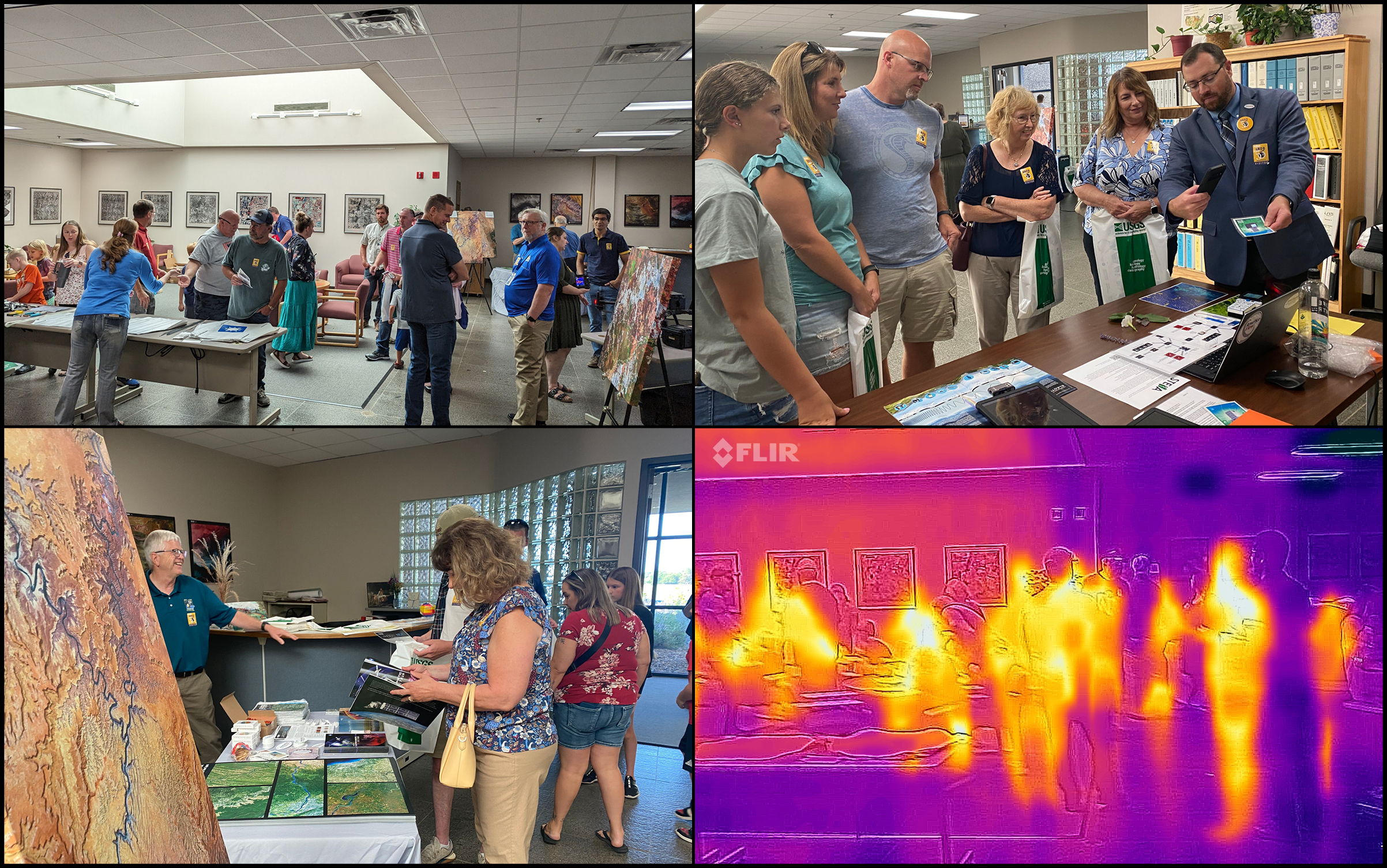
A Spotlight on STELLA
During the event, the STELLA handheld spectrometer became a focal point of interest. STELLA (Science and Technology Education for Land/Life Assessment), a portable do-it-yourself (DIY) scientific instrument developed by the Landsat CPE Team, supports remote sensing education and outreach through scientific inquiry and discovery. As a DIY build, students, teachers, and young scientists can gain hands-on experience in science, technology, and engineering as they follow freely available online plans, instructions, and activities. With state-of-the-art sensors, STELLA measures the intensity of light reflected from surfaces across 12 different wavelength ranges in the visible and near-infrared regions of the electromagnetic spectrum. The instrument also encompasses sensors that measure surface temperature (emitted far infrared light). The spectral measurements acquired by STELLA correspond to those collected by sensors on Landsat satellites.
Attendees of the EROS 50th anniversary STEM event were drawn to the educational value and versatility of STELLA. The device offers a wide range of STEM-based learning activities, from building and programming an instrument to collecting, visualizing, and interpreting real-world scientific data. Guests were inspired by the capabilities and potential applications of the device, as the demonstration provided a foundational understanding of how the sensors on Landsat satellites collect data and how the data can be used to assess vegetation health. The online STELLA Dataviewer provided a platform for displaying, understanding, and exploring the spectral responses from different surfaces and materials. The STELLA augmented reality (AR) promotional card, which allows viewing of a 3D STELLA model on Instagram, served as a fascinating conversation piece and interactive experience.
